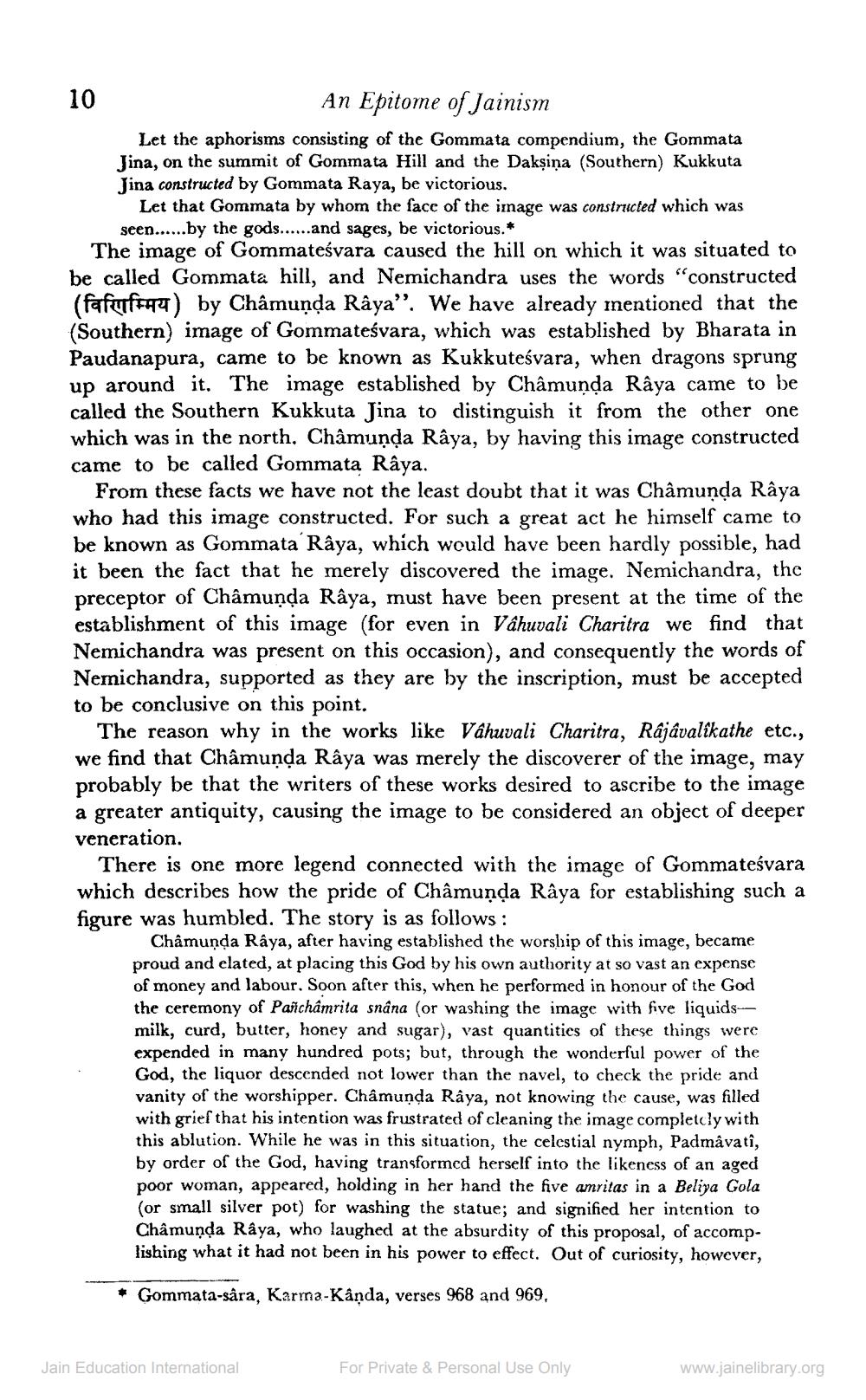________________
10
An Epitome of Jainism Let the aphorisms consisting of the Gommata compendium, the Gommata Jina, on the summit of Gommata Hill and the Dakşiņa (Southern) Kukkuta Jina constructed by Gommata Raya, be victorious.
Let that Gommata by whom the face of the image was constructed which was seen.....by the gods......and sages, be victorious.* The image of Gommateśvara caused the hill on which it was situated to be called Gommata hill, and Nemichandra uses the words "constructed (fafufihy) by Châmunda Râya". We have already mentioned that the (Southern) image of Gommateśvara, which was established by Bharata in Paudanapura, came to be known as Kukkuteśvara, when dragons sprung up around it. The image established by Châmunda Râya came to be called the Southern Kukkuta Jina to distinguish it from the other one which was in the north, Châmunda Râya, by having this image constructed came to be called Gommata Râya.
From these facts we have not the least doubt that it was Chamunda Raya who had this image constructed. For such a great act he himself came to be known as Gommata Raya, which would have been hardly possible, had it been the fact that he merely discovered the image. Nemichandra, the preceptor of Châmunda Râya, must have been present at the time of the establishment of this image (for even in Vâhuvali Charitra we find that Nemichandra was present on this occasion), and consequently the words of Nemichandra, supported as they are by the inscription, must be accepted to be conclusive on this point.
The reason why in the works like Vâhuvali Charitra, Râjâvalikathe etc., we find that Châmunda Râya was merely the discoverer of the image, may probably be that the writers of these works desired to ascribe to the image a greater antiquity, causing the image to be considered an object of deeper veneration.
There is one more legend connected with the image of Gommateśvara which describes how the pride of Châmunda Râya for establishing such a figure was humbled. The story is as follows:
Châmunda Raya, after having established the worship of this image, became proud and elated, at placing this God by his own authority at so vast an expense of money and labour. Soon after this, when he performed in honour of the God the ceremony of Pañchâmrita snana (or washing the image with five liquids milk, curd, butter, honey and sugar), vast quantities of these things were expended in many hundred pots; but, through the wonderful power of the God, the liquor descended not lower than the navel, to check the pride and vanity of the worshipper. Châmunda Raya, not knowing the cause, was filled with grief that his intention was frustrated of cleaning the image completely with this ablution. While he was in this situation, the celestial nymph, Padmavati, by order of the God, having transformed herself into the likeness of an aged poor woman, appeared, holding in her hand the five amritas in a Beliya Gola (or small silver pot) for washing the statue; and signified her intention to Châmunda Raya, who laughed at the absurdity of this proposal, of accomplishing what it had not been in his power to effect. Out of curiosity, however,
* Gommata-sâra, Karma-Kânda, verses 968 and 969,
Jain Education International
For Private & Personal Use Only
www.jainelibrary.org




